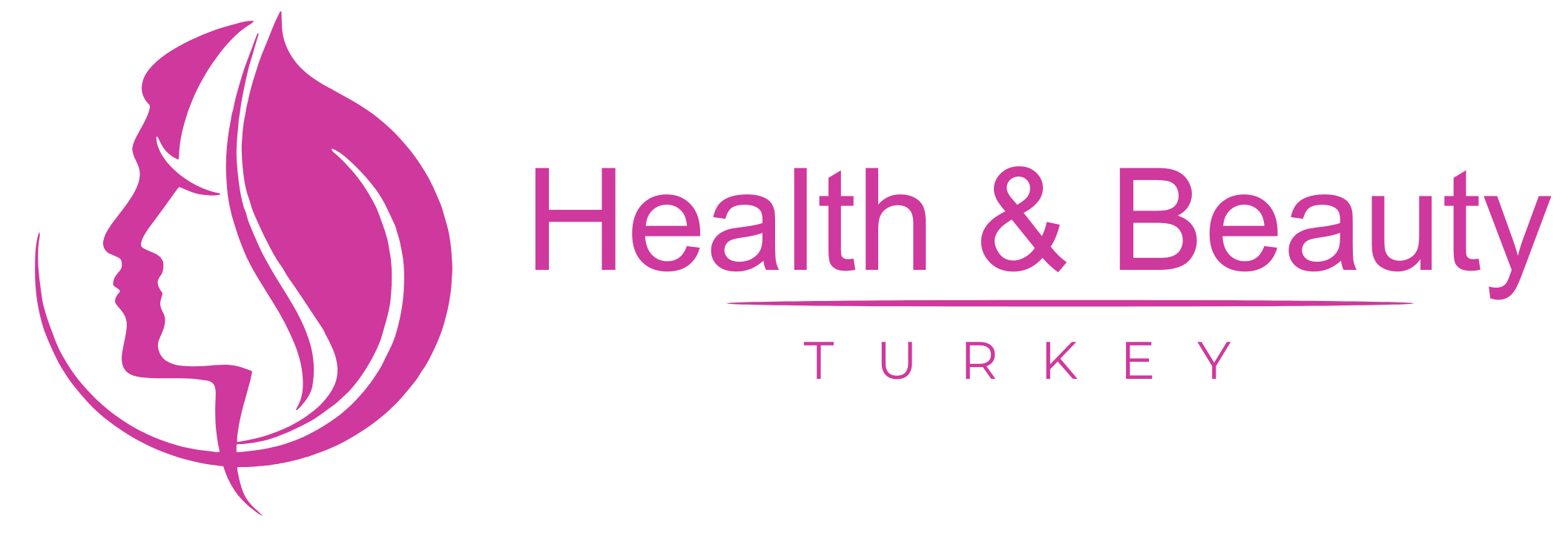Hair Transplant for Women in Turkey: Your Comprehensive Guide to the Procedure and Expected Results
Hair loss or thinning is a problem that affects a woman’s confidence and beauty, and it can cause feelings of anxiety and distress. The good news is that modern science has provided effective solutions to this problem, with hair transplant techniques standing out as one of the most prominent solutions. In recent years, Turkey has become a global leader in hair transplantation, especially for women, thanks to its high-level medical expertise, advanced techniques, and competitive prices.
At “Health & Beauty Turkey,” we fully understand the psychological impact that hair loss can have on women. For this reason, we are committed to providing the latest and safest medical solutions while focusing on delivering a comfortable and reassuring treatment experience. This article aims to provide a comprehensive guide on hair transplantation for women in Turkey, starting with understanding the causes and leading to expectations for results, emphasizing the importance of choosing the right center to ensure success.
Article Contents:
- Medical Causes of Hair Loss in Women
- Who Are the Ideal Candidates for Hair Transplant?
- Preparation for Hair Transplantation
- Details of the Hair Transplant Procedure for Women
- Recovery Period and Expected Results
- Innovative Treatment Options in Turkey and the Advantages of “Health & Beauty Center”
- Comprehensive Insurance Against Complications of Medical Tourism
- Practical Tips for Patients
- Why Choose “Health & Beauty Center” in Turkey?
- Cost of Hair Transplantation for Women in Turkey
- Conclusion
- Frequently Asked Questions
Medical Causes of Hair Loss in Women: Understanding the Roots of the Problem
Hair loss is not limited to men; women also suffer from various and complex reasons. Understanding these causes is the first step toward choosing the most appropriate treatment.
Common Causes of Hair Loss in Women:
- Genetic Factors (Female Pattern Baldness): This type of hair loss is the most common and is linked to genes and hormones. It usually manifests as general thinning of the scalp, while the front hairline remains relatively dense, unlike male baldness characterized by a receding hairline.
- Hormonal Changes: Hormones play a crucial role in hair health. Hormonal fluctuations due to pregnancy, childbirth, menopause, or thyroid disorders (hypothyroidism or hyperthyroidism) can lead to hair loss.
- Medical Conditions: Some chronic diseases, such as autoimmune diseases (such as alopecia areata), and fungal infections of the scalp can lead to hair loss.
- Chemotherapy and Radiation: These treatments are known for their ability to cause hair loss as a common side effect, although it is usually temporary.
- Nutritional Deficiencies: Not getting enough essential vitamins and minerals such as iron, zinc, biotin, and vitamin D can negatively affect hair follicle health and lead to hair loss.
- Severe Physical and Emotional Stress: Experiencing significant psychological or physical stress, such as major surgery, a serious illness, or emotional trauma, can lead to a condition known as telogen effluvium, which is a sudden and widespread hair loss that occurs a few months after the triggering event.
- Excessive Hair Styling and Pulling: Hairstyles that pull on the hair severely (such as tight ponytails, braids, or excessive use of heat styling tools) can cause a type of hair loss known as traction alopecia.
- Some Medications: Certain medications used to treat high blood pressure, depression, arthritis, and heart problems may have hair loss as a side effect.
Symptoms and Diagnosis:
Symptoms of hair loss in women vary, but often include:
- General thinning of the scalp.
- Notable retrogression in hair density.
- Presence of bald or semi-bald patches.
- Increased amount of hair falling out on the brush, in the shower, or on the pillow.
To diagnose the cause of hair loss, specialized doctors perform a thorough examination of the scalp, review the patient’s medical history, and may conduct laboratory tests (such as blood tests to measure hormone, vitamin, and mineral levels) and sometimes take a biopsy of the scalp.
Who Are the Ideal Candidates for Hair Transplant?
Not every woman suffering from hair loss is a suitable candidate for hair transplant surgery. To ensure the best results and highest levels of safety, each case is evaluated individually.
Basic Criteria for the Ideal Candidate:
- Identifying the Cause of Hair Loss: The cause should be known and treatable or improvable, and non-surgical treatments should have been attempted and failed to achieve the desired results.
- Density of Donor Hair: This point is crucial. Hair is taken from areas where the follicles are strong and resistant to loss (usually the back and sides of the head). These areas should have sufficient density to cover areas that are thin or vacant.
- Good Overall Health: The patient should be in good health overall, without chronic diseases that may hinder the healing process or increase the risks of surgery.
- Realistic Expectations: The patient should be fully aware of what to expect from the procedure and have a realistic understanding of the potential results, which may require multiple sessions to achieve the desired density.
- No Active Alopecia Areata: In the case of alopecia areata, it is often advised to wait until the condition stabilizes, as successful transplants may occur but could be affected by disease progression.
Who May Not Be a Good Candidate?
- Patients experiencing hair loss due to a disease that is still active or unstable.
- Patients with blood clotting issues or uncontrolled autoimmune diseases.
- Individuals with unrealistic expectations for results.
- Cases where sufficient donor hair follicles are not available.
Preparation for Hair Transplantation: Essential Steps Before Traveling
Good preparation is key to the success of any surgical operation, and hair transplantation is no exception. At “Health & Beauty Center,” we pay great attention to guiding our patients through this stage to ensure a smooth and safe experience.
Important Medical Tips and Recommendations:
- Comprehensive Medical Consultation: Before deciding to travel, make sure to communicate with our medical representatives at “Health & Beauty Center” to discuss your condition, send clear pictures of the affected areas, and obtain a preliminary evaluation from our doctors.
- Required Medical Examinations: Your doctor may request routine tests to ensure your health fitness, such as a complete blood count, blood clotting tests, and hormone levels if necessary.
-
Lifestyle Adjustments:
- Nutrition: Focus on a healthy diet rich in proteins, vitamins, and minerals to support hair and follicle health.
- Avoiding Smoking: It is advised to quit smoking weeks before the surgery, as smoking negatively affects blood flow to the scalp and the healing process.
- Avoiding Alcohol: Limiting alcohol intake prior to the procedure is recommended.
- Avoiding Certain Medications: Inform your doctor of all medications and supplements you take, as you may need to stop taking some, such as blood thinners (aspirin, warfarin), vitamin E supplements, and herbs that may affect blood clotting, a certain time before the procedure.
- Psychological Preparation: Talk openly about your fears and expectations with your doctor or your medical representative. Understanding the procedure well and setting realistic goals helps reduce anxiety.
- Travel and Accommodation Arrangements: The “Health & Beauty Center” team will assist you in travel arrangements, hotel bookings, and transportation to and from the airport and clinic to ensure your comfort.
Details of the Hair Transplant Procedure for Women: Step by Step
Hair transplantation is a delicate procedure that requires high skill and expertise. At “Health & Beauty Center,” we use the latest techniques to ensure the highest levels of accuracy and natural results.
1. Pre-procedure: Evaluation and Preparation in the Clinic
- Final Consultation and Examination: Upon your arrival in Turkey, you will meet your specialized doctor who will conduct a thorough examination of your scalp, identify the areas needing transplantation, estimate the number of follicles needed, and design the new hairline to fit your facial features.
- Explanation of the Technique: The doctor will explain in detail the technique that will be used (such as FUE), and the steps that will take place during the procedure.
- Anesthesia: The procedure is performed under local anesthesia. The doctor will inject a numbing agent into the donor and recipient areas to ensure no pain is felt during the procedure.
2. During the Procedure: Modern Hair Transplant Techniques
Most hair transplant techniques for women are based on the principle of extracting hair follicles from dense hair areas (the donor area) and planting them in the areas that are thinning or vacant. The most commonly preferred technique at “Health & Beauty Center” is the **Follicular Unit Extraction (FUE)** technique.
Follicular Unit Extraction (FUE) Technique:
- Extracting Follicles: Using very precise tools (micro motor or specialized pens), the doctor extracts hair follicles one by one from the donor area. This process leaves no large linear scars but just very small dots that are barely visible and heal quickly.
- Preparing Follicles: The extracted follicles are carefully sorted under a microscope and divided into units containing one, two, or three hairs, as required.
- Creating Recipient Channels: The doctor creates very fine and small incisions in the targeted areas (thinning hair areas) using special needles. The angle, depth, and direction of these channels are meticulously determined to ensure a natural appearance for the transplanted hair.
- Transplanting Follicles: The extracted follicles are carefully implanted in the created channels. This phase requires extreme precision to ensure the hair grows in the right direction and at the appropriate density.
DHI (Direct Hair Implantation) Technique:
DHI is an advancement of the FUE technique, using the Choi pen which combines the processes of channel creation and follicle implantation in one step. This technique may offer greater accuracy in controlling the angle and depth of implantation and may contribute to quicker recovery time.
Important Notes About the Techniques:
- Avoiding the FUT Technique: The traditional FUT (Follicular Unit Transplantation) technique that relies on excising a strip of scalp is usually avoided as it leaves a noticeable linear scar and may be undesirable for women.
- Covering the Donor Area: Since women typically have relatively long hair in the donor area, the areas from which follicles have been extracted can easily be covered by surrounding hair, making the effects of the procedure unnoticeable.
- Natural Results: Our doctors focus on achieving a natural hairline that is harmonious with facial features, taking care of hair growth angles so that the results look completely natural.
3. Post-procedure: Immediate Care and Recovery
- Initial Rest: After the completion of the procedure, a resting area will be provided for the patient. You may experience some swelling or mild redness on the scalp, which is normal and subsides within a few days.
- Medications: The doctor will prescribe some medications to relieve any potential pain (if any) and antibiotics to prevent infection.
- Care Instructions: You will receive detailed instructions on how to care for your scalp in the initial days, including how to sleep and how to gently wash your hair.
- Medical Follow-up: Follow-up appointments will be scheduled to monitor the condition of the scalp and ensure no complications arise.
4. Recovery Period and Expected Results
The recovery period varies from person to person, but it is generally organized as follows:
- Week One: Beginning of healing for the donor and transplanted areas. You may notice some peeling which is normal. You will be guided on how to wash your hair gently.
- Weeks 2-4: Most redness and swelling disappear. The transplanted follicles may start to fall out (known as “shock loss”). Do not worry, this is a very natural step as the follicles remain intact beneath the skin to regrow.
- Month 1-3: New hairs begin to gradually appear. These hairs may be thin at first.
- Month 3-6: Hair growth significantly increases, and density begins to improve.
- Month 6-12: Most of the transplanted hair will have grown, and the final density will begin to show.
- Month 12-18: Results peak, and the final hair density is complete.
Expected Results: The goal of hair transplantation is to restore density and achieve a natural hair appearance. The results are usually permanent, as transplanted hair from the donor area is resistant to shedding.
Innovative Treatment Options in Turkey and the Advantages of “Health & Beauty Center”
Turkey has become a global hub for excellence in hair transplantation, and “Health & Beauty Center” plays a leading role in providing the latest techniques and unmatched services.
Latest Techniques and Innovations:
- FUE Technique with Micro Tools: Using precise micro motors and special pens ensures the extraction of follicles with minimal damage, increasing the success rates of the follicles.
- DHI Technique: As mentioned, it offers high precision in implantation and contributes to better density.
- Use of Stem Cells (PRP): The hair transplant technique may be combined with platelet-rich plasma (PRP) sessions to enhance the growth of transplanted hair and strengthen remaining natural follicles.
- 3D Hairline Design: Using advanced programs and techniques to design a natural and ideal hairline that fits facial features.
Why Choose “Health & Beauty Center”?
- Expertise of Doctors: Our team includes elite cosmetic surgeons specializing in hair transplantation, who have years of experience and international training, with a proven track record of success.
- Latest Techniques: We are committed to using the latest equipment and techniques to ensure the best results and highest safety standards.
- Comprehensive Care: We provide an integrated service that includes:
- Free Consultation: Assessment of your condition and determining the most appropriate treatment plan.
- Private Transportation: Pickup from the airport and transport to the hotel and clinic.
- Hotel Accommodation: Comfortable accommodation in luxury hotels.
- Interpreters: To ensure ease of communication.
- Post-operative Follow-up: Providing all necessary support during the recovery period.
- Safety and Peace of Mind: We understand that concerns about complications are valid. Therefore, we are proud to provide our patients with “Comprehensive Insurance Against Complications of Medical Tourism”.
Comprehensive Insurance Against Complications of Medical Tourism: Priceless Peace of Mind
At “Health & Beauty Center,” we prioritize your safety and comfort. For this reason, we offer all our patients “Comprehensive Insurance Against Complications of Medical Tourism,” providing you with additional protection and enhancing your confidence in your treatment journey.
Insurance Coverage Details:
- Hospital Treatment Coverage: This insurance covers the costs of hospital treatment in case of any medical complications requiring hospitalization after the procedure.
- Duration of Coverage: The insurance extends for six months from the date of the procedure, giving you ample time to feel completely secure.
- Coverage of Corrective Surgery Costs (if needed): In very rare cases, the patient may require corrective surgery. The insurance covers the costs of the necessary corrective surgery if needed, as well as coverage for travel and accommodation costs associated with it, alleviating any additional burden.
- Approved Clinics: The insurance includes treatment only in clinics and hospitals accredited by the Turkish Ministry of Health, ensuring you receive care in a high-quality medical environment.
This insurance reflects our commitment to providing the highest levels of quality and safety and makes Turkey a reliable and reassuring treatment destination for hair transplantation.
Practical Tips for Patients: A Smooth Treatment Journey
To ensure an enjoyable and comfortable treatment experience, here are some practical tips:
Travel Preparation:
- Ensure your passport is valid and your visa (if needed) is ready.
- Prepare a travel bag with comfortable clothing, personal medications, and some snacks.
- Obtain both electronic and paper copies of all travel documents and medical tests.
Mental Preparation:
- Talk to your doctor about your fears and questions.
- Read the experiences of previous patients (but remember that results are individual).
- Think about the reasons that led you to undergo the procedure and focus on the positive expected results.
Post-treatment Advice:
- Rest: Give your body enough rest after the procedure.
- Proper Nutrition: Continue eating healthy foods to support the healing process and hair growth.
- Avoid Strenuous Activities: Avoid heavy physical activities, swimming in pools, and direct exposure to intense sunlight in the initial weeks.
- Follow Doctor’s Instructions: Adhere closely to all instructions regarding hair and scalp care.
- Patience: Remember that final results take time, so don’t rush or worry if you don’t see immediate improvement.
Why Choose “Health & Beauty Center” in Turkey?
Choosing the right medical center is half the battle. At “Health & Beauty Center,” we offer you a unique blend of expertise, technology, and safety.
- World-Class Experts: Our team of doctors and technicians holds the highest certifications and operates according to international standards.
- Comprehensive Care: We offer comprehensive packages that ensure your peace of mind from the moment you arrive until your departure, with ongoing support.
- Unmatched Safety: Adherence to strict health standards, use of the latest techniques, and provision of comprehensive insurance against complications are all factors that make us the ideal choice.
- Natural and Guaranteed Results: Our goal is to achieve the highest levels of satisfaction for our patients through natural and lasting results.
- Trusted Medical Center: We are committed to transparency and providing accurate information, with a focus on building a trusting relationship with each patient.
Cost of Hair Transplantation for Women in Turkey, Procedure Details and Expected Results
Turkey is one of the most attractive destinations globally for hair transplantation, not only for the quality of treatment but also for its competitive prices compared to Western countries. The cost of hair transplantation for women in Turkey varies based on several key factors:
- Technique Used: Techniques like FUE and DHI may differ in cost.
- Number of Transplanted Follicles: The more follicles required to cover the area, the higher the cost.
- Complexity of the Case: Some cases requiring treatment for large bald spots or repair of previous transplants may be more expensive.
- Clinic Reputation and Doctor’s Experience: Reputable clinics and highly experienced doctors may have higher costs, but they often guarantee better results and higher safety.
- Package Offered: Many centers, including “Health & Beauty Center,” offer comprehensive packages that include treatment, accommodation, transportation, and some follow-up sessions, making the total cost clear and defined.
In general, the average cost of hair transplantation for women in Turkey ranges from $1,500 to $4,000 and may increase or decrease slightly depending on the factors mentioned. At “Health & Beauty Center,” we strive to provide the best value for money, ensuring the highest levels of quality and safety. For an accurate estimate of your case, we recommend contacting us for a free assessment.
Conclusion: Restore Your Confidence in Your Beauty with “Health & Beauty Center”
Deciding on hair transplantation is an investment in yourself and your self-confidence. At “Health & Beauty Center,” we understand the importance of this decision, and we work hard to provide you with a safe, effective, and comfortable treatment experience. Turkey, with its advanced medical expertise, and “Health & Beauty Center,” with its integrated services and innovative techniques, along with our comprehensive insurance against complications, is your ideal destination to regain your hair’s youth and beauty.
Don’t let hair loss affect your life. Take the first step toward reclaiming your hair’s luster and your self-confidence.
Are you ready to turn your dream into reality?
Contact our medical representative now for a free consultation and personal assessment of your condition. Our team is ready to answer all your inquiries and assist you in planning your journey toward healthy and beautiful hair in Turkey.
Frequently Asked Questions
- Is hair transplantation for women painful?
- Hair transplantation is performed under local anesthesia, meaning you will not feel any pain during the procedure. You may feel some light pressure at times, but it is not uncomfortable. After the anesthesia wears off, you may experience slight discomfort that can be controlled with prescribed pain relievers.
- When will I see the results of the hair transplantation?
- Results begin to gradually appear after about 3-4 months post-procedure. Density significantly increases during the first six months, and final results are usually completed within 12 to 18 months after the hair transplantation.
- Is hair transplantation for women permanent?
- Yes, hair transplantation is permanent. The follicles that are implanted come from areas of the scalp that are resistant to genetic shedding, and therefore, the hair that grows from them will always be.
- Can hair transplantation treat all types of hair loss?
- Hair transplantation is an effective solution for most cases of hair loss caused by genetics or thinning but it is not the ideal solution for all causes. Consulting a doctor is necessary to determine if hair transplantation is the best option for your condition. Some cases like active alopecia areata or loss caused by skin diseases may require other treatments first.
- What is the difference between FUE and DHI techniques?
- Both techniques aim to extract and implant hair follicles. The FUE technique uses precise tools to extract the follicles and then creates channels for implantation. The DHI technique uses a special Choi pen that performs both the channel creation and follicle implantation in one step, which may provide more precise control over the angle and depth of implantation and contribute to higher density. The doctor will determine the most suitable technique based on the patient’s condition.




